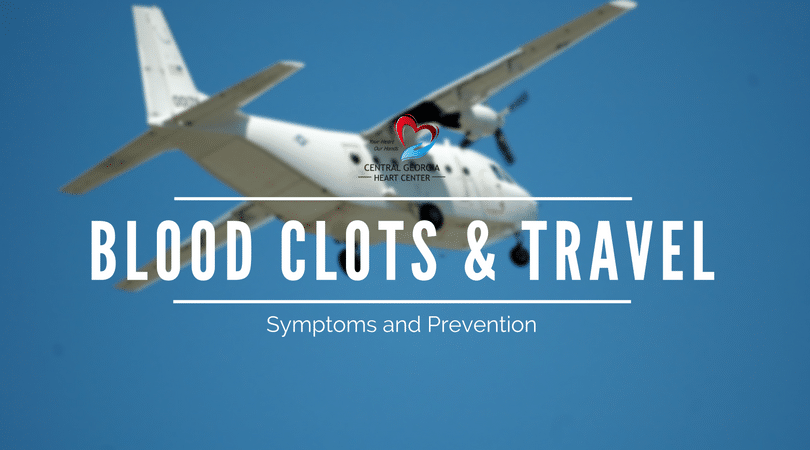Traveling a long distance (4+ hours) can put many people at risk of developing blood clots, also known as DVT (deep vein thrombosis). While this is most commonly associated with air travel, it is also a risk for any travel that requires you to sit for extended periods of time. This includes car, bus, train, and airplanes.
During prolonged periods of sitting still in a confined space, blood clots can form deep in the veins that you cannot see from the surface of the skin. The longer length of time spent sitting still, the greater the risk. In many cases, blood clots will dissolve on their own with little to no side effects. However, certain populations may be at greater risk and can develop serious health issues if a blood clot breaks off and travels elsewhere to the lungs. The end result is may be a life-threatening pulmonary embolism. Understanding your risk factor and taking precautions can decrease risks.
How Do I Know If I Am At Risk For Blood Clots?
Generally speaking, the risk of developing a blood clot is small. It depends upon personal health and the duration of travel. Some patients may have a greater risk if they meet the following criteria:
- Over Age 40
- Obese
- Recent surgery or injury (within 3 months)
- Use estrogen based birth control products
- Patients using hormone replacement therapy
- Pregnancy and the postpartum period (up to 6 weeks after childbirth)
- Previous blood clot or a family history of blood clots
- Cancer (active or recent)
- Are limited in range of mobility due to injury
- Catheter placed in a large vein
- Varicose veins
The more conditions you meet and the length of the travel distance combine to increase the chances of developing a blood clot. If you meet one or more of the following criteria and plan on traveling a distance greater than 4 hours, speak with your cardiologist about precautions and symptoms.
Common Symptoms Of Blood Clots
Deep Vein Thrombosis (DVT)
Many patients experience no symptoms of DVT, however, keep an eye out for the following:
- Swelling of your leg or arm
- Unexplained pain or tenderness
- Warm skin
- Skin redness
Pulmonary Embolism (PE)
You can have a PE without any symptoms of a DVT. Symptoms of a PE can include:
- Difficulty breathing
- Faster than normal or irregular heartbeat
- Chest pain or discomfort, which usually worsens with a deep breath or coughing
- Anxiety
- Coughing up blood
- Lightheadedness, or fainting
Precautions and Prevention:
- Be aware of the symptoms
- Speak with your doctor before traveling if you have had recent heart issues, are taking blood thinners, or meet any of the risk factors above
- Consider wearing compression socks
- Get up and move around for 10 minutes at least 1X per hour





